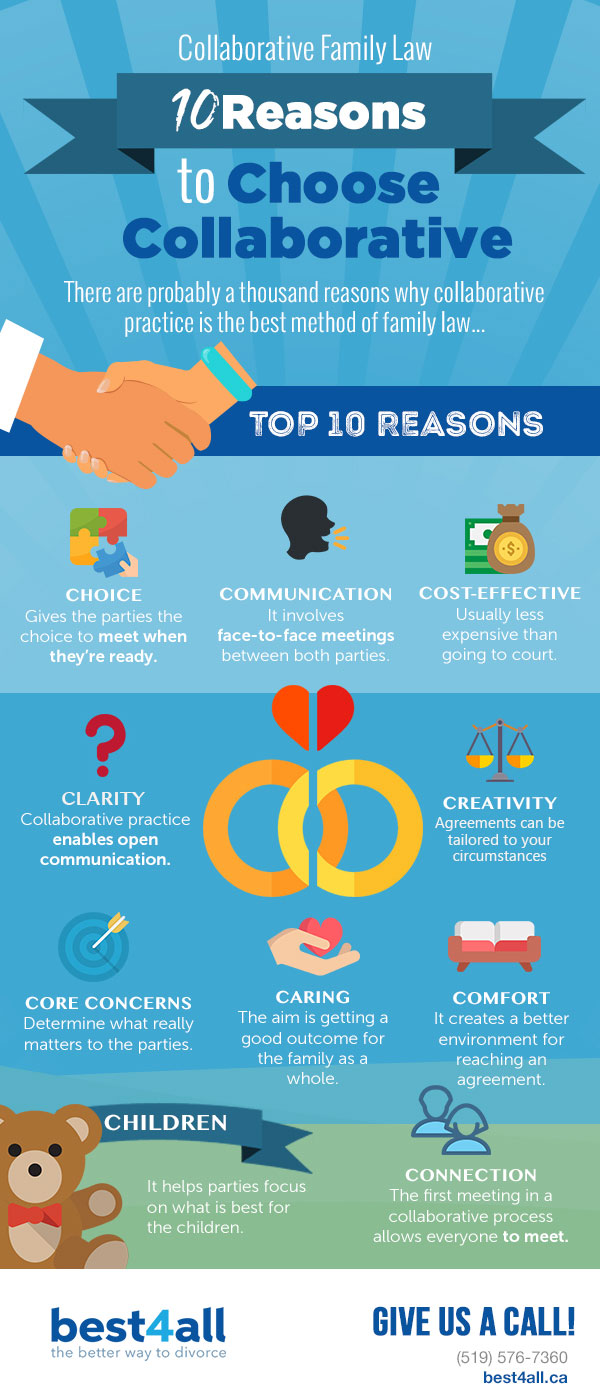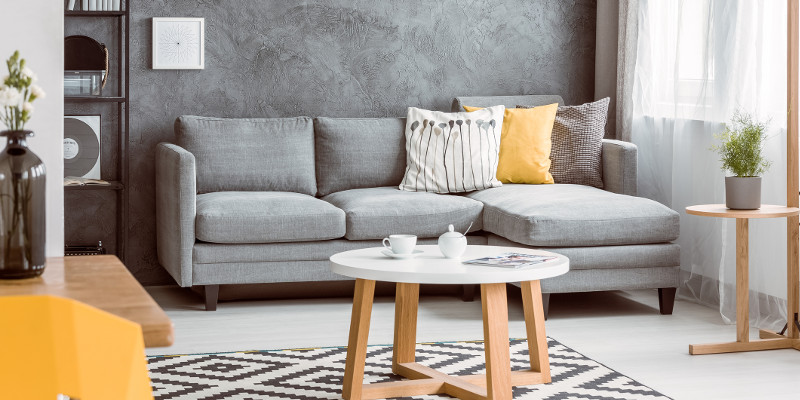
By Rita Davie at HD Collaborative Law
There are probably a thousand reasons why collaborative practice is the best method of family law, but here are my top ten:
1. Choice
The collaborative process gives the parties the choice to meet when they’re ready, where they want to, and to decide the outcome that works best for them. It’s the opposite of court, where someone else decides all of those things.

When a matter goes before a judge, the parties generally give up their ability to choose. Often the outcome is something neither person really wants — which makes it a struggle to carry out in day-to-day life. Problems land everyone back in court.
2. Certainty
Collaborative practice enables open communication and a thorough discussion of how the parties expect an agreement to be carried out. If something unexpected arises, there is a respectful process in place to talk about it.
There’s nothing worse than an outcome that leaves the parties unclear on the issues or how terms are to be carried out. It can lead to more legal arguments and long delays in connection with a deal that was supposed to be final.
3. Communication
A collaborative approach involves face-to-face meetings between both parties and both lawyers, with a written agreement in place that communication will be open, honest and productive. It is more than possible for communication to improve through the collaborative process, as positive communication skills are encouraged and modelled by the collaborative team.
Traditional family law can discourage communication between parties by placing lawyers as intermediaries for discussions. It isn’t uncommon that a situation is inflamed by an exchange of letters between lawyers.
4. Cost
Collaborative practice is not free, and the lawyers and other professionals bill according to time spent, which can vary depending on the complexity of the file and the needs of the parties. The difference is that, with collaborative, there is more control over the timing and frequency of meetings, and often, more even distribution of cost between the parties. The non-legal professional fees are usually shared, and there are no expensive, last-minute affidavits or briefs needing to be drafted.
Litigation is expensive, and there’s no real way to predict how expensive because you can’t be sure of what the other side will do. It is more than likely that one application to court will cost in the thousands of dollars (for each party), and a trial will cost in the tens of thousands.
5. Connection
The first meeting in a collaborative process allows everyone to see and speak with everyone else. Having a face and personality attached to written communication can normalize the situation and reduce negative feelings. The lawyers speak directly to both clients in group meetings. If a family professional is part of the group (which we often recommend), the parties have a neutral support person in the room with whom they’ve already developed a rapport.
In traditional family law, it is not unusual for one party to never meet the other party’s lawyer. This can cause negative feelings or fear to develop, especially when inflammatory letters are passing back and forth.
6. Creativity
Maybe one of the biggest benefits of the collaborative process is that it is not bound by rigid legal principles and values. Legal precedent is important, and the parties need to know their rights and obligations under the law, but they have flexibility in considering other factors. In collaborative, the outcomes decided by the parties can be creative and focused on individual needs.
Judges make decisions on fact and law and have specific remedies that they will order. It’s part of the reason everyone feels they’ve lost after a family trial: certain intangible needs are not addressed.
7. Core Concerns
One of the first tasks in the collaborative process is to determine what really matters to the parties. Core concerns can be hard to articulate, but once identified, can then be addressed. A party who is dead set on keeping the house may have a core concern about stability for the children. Once that is understood, it can break down barriers to arguments and even be met another way.
In court, arguing over a house is arguing over a house.
8. Caring
Collaborative teams care about a good outcome for the family as a whole. Everyone is bound by an agreement to work together to address the concerns of both parties and help them reach an outcome that works.
Traditional family law is more complicated. The focus is adversarial and positional. Arguments on legal issues are opposing. There’s not a lot of room for caring about the party on the other side.
(I personally believe that it’s always your job to look out for your clients’ future interests, which include being able to communicate with their ex-spouse. Reminding a client of the benefits of a respectful exchange is advocating for your client as much as supporting their anger is . . . but I’ll save that discussion for a future post).
9. Comfort
This might seem insignificant compared with some other points, but my view is that arriving at a private office and sitting down in a comfortable chair with a cup of tea (or maybe a slice of pizza) is a better environment for reaching an agreement than a cold boardroom table or a courtroom. Treat yourself nicely. This is hard stuff.
10. Children
Last but most important. Collaborative practice is one way to keep your family strong even if it doesn’t all live together anymore. It’s not just about recording a deal and agreeing to who gets the kids for Halloween. It’s building skills for working these issues out in a productive way for the rest of your life as a parent. It’s providing a safe space to tell your ex-spouse why it’s so important to you to keep Christmas morning the same this year, and maybe feeling enough goodwill in the end to invite him to be there, too.
There’s no perfect way to separate, and there will always be some hurt and heartache. I hope this post gives you some hope that there are ways to do it without a war and with the possibility of better relationships down the road. Thanks for reading.
